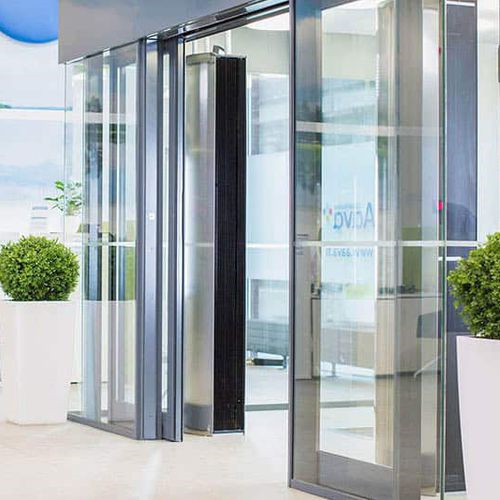How does the installation process of automatic sliding door openers compare to other types of door opener systems?
As technology continues to advance, the quest for convenience and accessibility has become a driving force in home and commercial spaces. Automatic door openers play a pivotal role in enhancing accessibility, with various systems available to suit different needs. Among these, automatic sliding door openers stand out for their seamless integration and space-saving design. In this article, we'll explore how the installation process of automatic sliding door openers compares to other types of door opener systems, shedding light on the key differences and considerations.

1. Automatic Sliding Door Openers: Streamlined Installation
Overview: Automatic sliding door openers are known for their sleek and modern design, making them a popular choice for both residential and commercial settings. The installation process is generally straightforward, but it requires careful consideration of the door size, weight, and power requirements.
Installation Steps:
Assessment: Measure the door dimensions and weight to determine the appropriate sliding door opener model.
Mounting: Install the track and brackets according to the manufacturer's instructions.
Power Connection: Connect the power source and ensure proper wiring.
Programming: Program the system settings, such as opening and closing speed, safety features, and sensor sensitivity.
Testing: Conduct thorough testing to ensure smooth and safe operation.
Advantages: Automatic sliding door openers are favored for their space efficiency, smooth operation, and suitability for areas with limited space. Their installation process is often quicker compared to some other door opener systems.
2. Swing Door Openers: Traditional Convenience
Overview: Swing door openers operate by swinging the door open, making them a common choice for residential entrances. Installation can vary depending on whether it's an electrically assisted opener or a fully automated system.
Installation Steps:
Hinge Adjustment: Adjust or replace hinges to accommodate the door opener mechanism.
Motor Installation: Install the motor and linkage to facilitate the swinging motion.
Power Connection: Connect the motor to a power source and ensure proper electrical wiring.
Programming: Program settings for opening and closing angles, speed, and safety features.
Testing: Thoroughly test the swing door opener to ensure proper functionality.
Advantages: Swing door openers are known for their traditional aesthetic and can be customized to suit various door styles. However, the installation process may be more complex compared to sliding door openers.
3. Garage Door Openers: Overhead Efficiency
Overview: Garage door openers are specifically designed for overhead doors, providing convenience and security for homeowners.
Installation Steps:
Track Installation: Install the track system for the garage door opener mechanism.
Motor Installation: Mount the motor unit on the ceiling and connect it to the track system.
Power Connection: Connect the opener to a power source and ensure proper electrical wiring.
Remote Programming: Program the remote control and safety features.
Testing: Test the garage door opener for smooth and reliable operation.
Advantages: Garage door openers are ideal for large overhead doors and offer enhanced security features. The installation process may be more involved due to the complexity of the garage door system.
Conclusion
The installation process of automatic sliding door openers, swing door openers, and garage door openers varies based on the specific design and functionality of each system. While automatic sliding door openers are often praised for their streamlined installation, other door opener systems cater to different needs and architectural styles. The choice between these systems ultimately depends on factors such as space constraints, door type, and the desired level of automation. Whichever system is chosen, the goal remains the same: to provide a seamless and accessible entryway for users.







